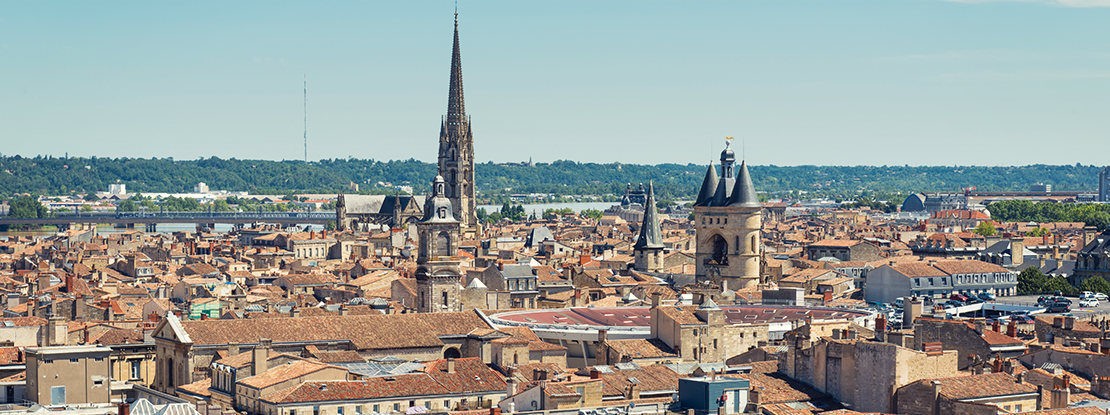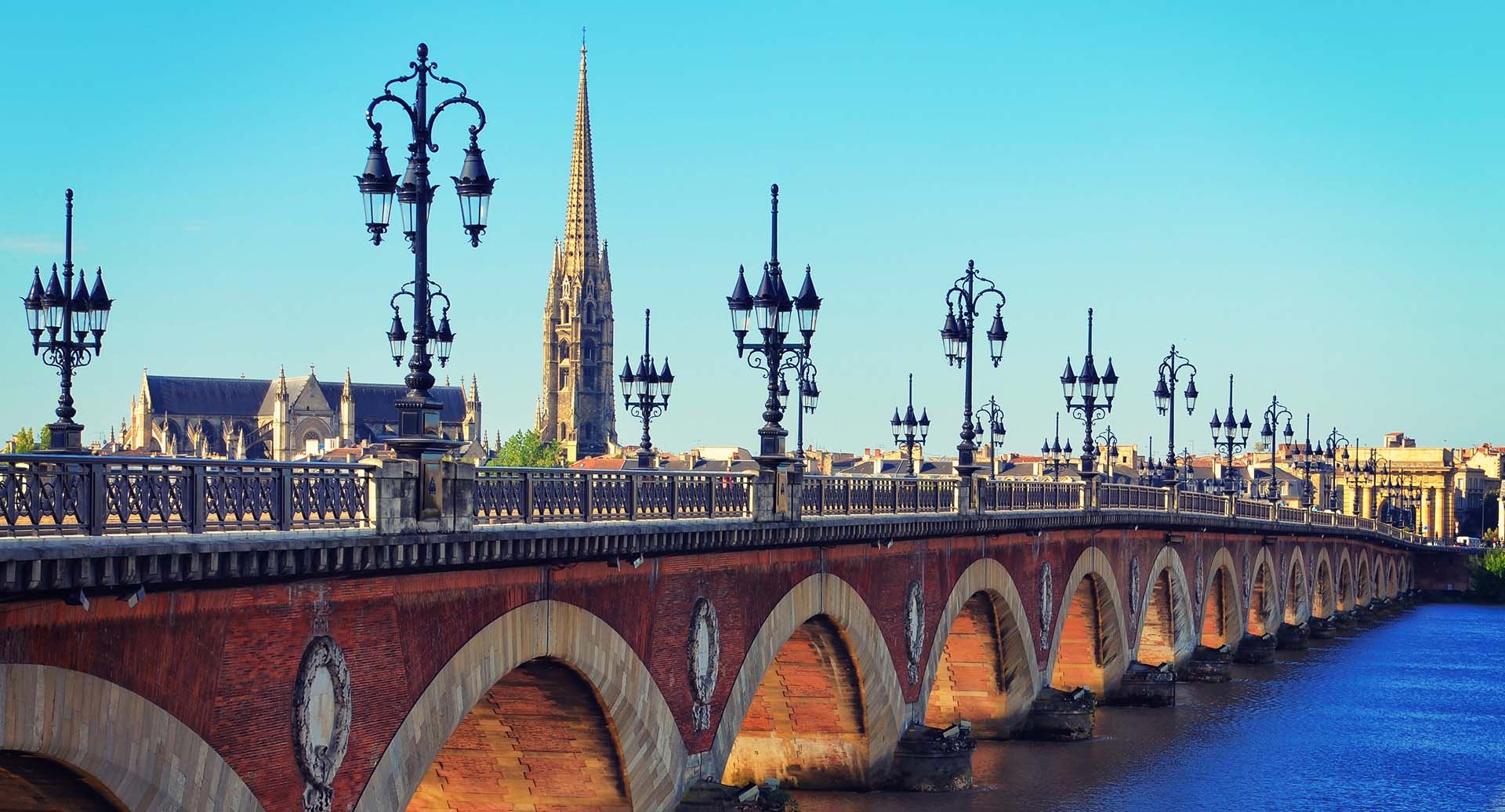Bordeaux: The City With the Taste of Wine
Surrounded by vineyards, the city of Bordeaux gathers the most refined flavours of France, but is able to captivate much more than the stomach alone. The capital of the Aquitaine region also has History, beauty and architectural harmony among its many qualities. Features confirmed, for example, by its recent election as European Best Destination 2015.
Routes of Sweet and Fruity Savours
The region of Bordeaux owns the vastest quality wine production area worldwide. One of the main attractions of this destination is, therefore, to get to know the famous wines of the five wine production regions that surround the city: Médoc, Sauternes and Graves, Saint-Émilion, Blaye and Bourg and Bordeaux and Entre-deux-Mers.
A sixth wine route might be added to the five mentioned above. It is organized by the Bordeaux Tourism Office and consists of a ride through some of the best wine bars in the city and metropolitan area. The many oenology experiences can last between two hours and a day and vary in genre: walking, by boat, cicling...
The liaison between Bordeaux and winegrowing will be reinforced with the opening of the Cité des Civilisations du Vin. This contemporary monument with a unique look wants to be seen as a ludic and interactive centre of knowledge about winery civilizations. Sided by the Garonne river, the Cité is close to another symbol of the contemporary Bordeaux: the Jacques Chaban-Demas drawbrige.
Walking by the riverside area we find the third main attraction of the modern Bordeaux: the Water Mirror. Located at the Place de la Bourse (Stock Exchange Square), it’s the biggest water mirror in the world, as well as the most photographed site in this French city.
The region of Bordeaux owns the vastest quality wine production area worldwide. One of the main attractions of this destination is, therefore, to get to know the famous wines of the five wine production regions that surround the city: Médoc, Sauternes and Graves, Saint-Émilion, Blaye and Bourg and Bordeaux and Entre-deux-Mers.
A sixth wine route might be added to the five mentioned above. It is organized by the Bordeaux Tourism Office and consists of a ride through some of the best wine bars in the city and metropolitan area. The many oenology experiences can last between two hours and a day and vary in genre: walking, by boat, cicling...
The liaison between Bordeaux and winegrowing will be reinforced with the opening of the Cité des Civilisations du Vin. This contemporary monument with a unique look wants to be seen as a ludic and interactive centre of knowledge about winery civilizations. Sided by the Garonne river, the Cité is close to another symbol of the contemporary Bordeaux: the Jacques Chaban-Demas drawbrige.
Walking by the riverside area we find the third main attraction of the modern Bordeaux: the Water Mirror. Located at the Place de la Bourse (Stock Exchange Square), it’s the biggest water mirror in the world, as well as the most photographed site in this French city.
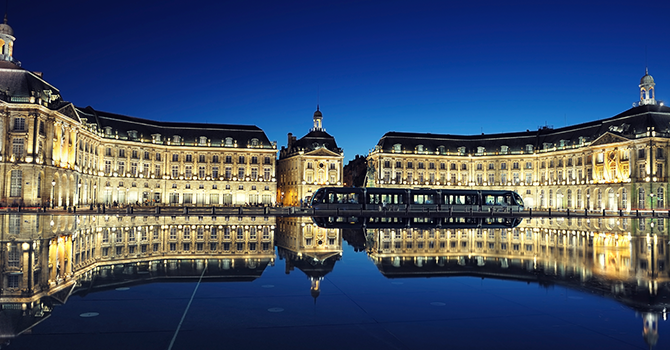
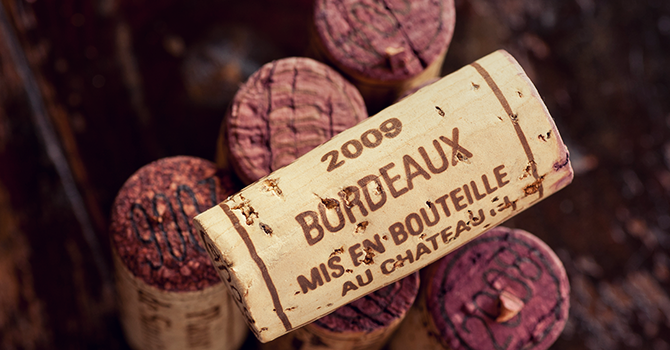
A Mirror For the 18th Century
Reflected by the Water Mirror, the majestic Stock Exchange Palace will act as our way into the ancient Bordeaux architecture, since, in its era, it marked the disruption with de Medieval Age. Designed in the 18th Century by Jacques Gabriel, first architect of King Louis XV, it is a symbol of the city’s prosperity in trade and has the National Museum of the Customhouse in its neighbourhood.
Hidden behind the Palace lies the Saint-Pierre district, the “historic heart of the city”, where streets are named after the old crafts, like Jewelers’s Street. There lies also the Saint-Pierre’s Square, embelished by the Saint-Pierre Church, the first church ever built in the city.
Nearby stands the majestic Port Cailhau, an old entrance to Bordeaux that was part of its medieval wall. From the top of the Porte we can see Bordeaux’s oldest bridge: the Stone Bridge. Walking outwards the river, we find the Grand Théâtre, which served as headquarters to the National Assembly in 1870, 1914 and 1941 — occasions in which Bordeaux functioned as France’s capital.
Since it is a port town that developed alongside Garonne’s riverbed, in a fraction where the river exibits a crescent moon shape, Bordeaux gained a poetic nickname: Port of the Moon.
Reflected by the Water Mirror, the majestic Stock Exchange Palace will act as our way into the ancient Bordeaux architecture, since, in its era, it marked the disruption with de Medieval Age. Designed in the 18th Century by Jacques Gabriel, first architect of King Louis XV, it is a symbol of the city’s prosperity in trade and has the National Museum of the Customhouse in its neighbourhood.
Hidden behind the Palace lies the Saint-Pierre district, the “historic heart of the city”, where streets are named after the old crafts, like Jewelers’s Street. There lies also the Saint-Pierre’s Square, embelished by the Saint-Pierre Church, the first church ever built in the city.
Nearby stands the majestic Port Cailhau, an old entrance to Bordeaux that was part of its medieval wall. From the top of the Porte we can see Bordeaux’s oldest bridge: the Stone Bridge. Walking outwards the river, we find the Grand Théâtre, which served as headquarters to the National Assembly in 1870, 1914 and 1941 — occasions in which Bordeaux functioned as France’s capital.
Since it is a port town that developed alongside Garonne’s riverbed, in a fraction where the river exibits a crescent moon shape, Bordeaux gained a poetic nickname: Port of the Moon.
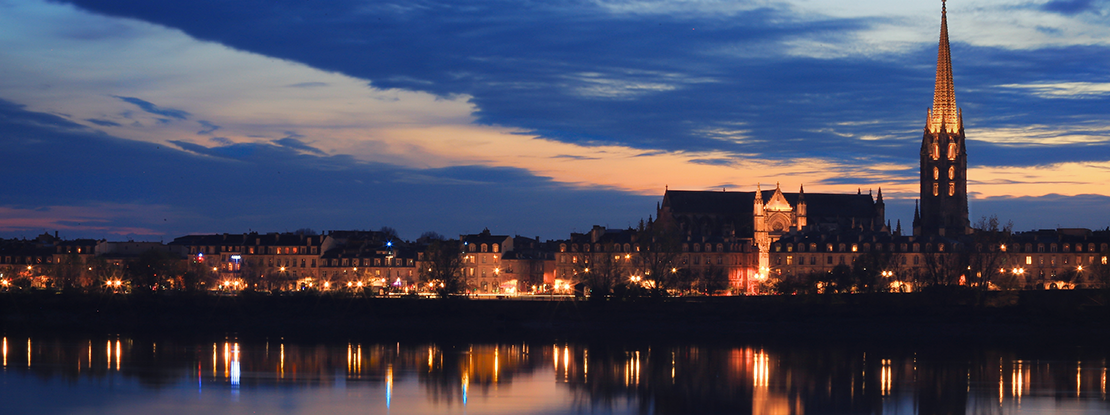
The Port of the Moon Patrimonial Richness
From 1996 on, Bordeaux started tidying itself by cleaning and renewing the facades and the riverfront, and by building a surface tramway. The effort was rewarded in 2007, with the elevation of the city to World Heritage by UNESCO.
Before that, in 1998, the city had testefied the classification of three of its religious buildings as World Heritage and their integration in the St. James’s Path. The buildings were: the Saint-Seurin basilica, the Saint-Michel basilica and the Saint-André cathedral, house of the famous Pey-Berland tower, the proud owner of a panoramic view over the city and... of 231 steps which you will have to climb to get to the top!
However, the effort of climbing will certainly be rewarded with a breathtaking sight over a romantic city, where the predominantly classic and neoclassic architecture of the 18th Century cohabitates in harmony with the medieval heritage and the new buildings.
From 1996 on, Bordeaux started tidying itself by cleaning and renewing the facades and the riverfront, and by building a surface tramway. The effort was rewarded in 2007, with the elevation of the city to World Heritage by UNESCO.
Before that, in 1998, the city had testefied the classification of three of its religious buildings as World Heritage and their integration in the St. James’s Path. The buildings were: the Saint-Seurin basilica, the Saint-Michel basilica and the Saint-André cathedral, house of the famous Pey-Berland tower, the proud owner of a panoramic view over the city and... of 231 steps which you will have to climb to get to the top!
However, the effort of climbing will certainly be rewarded with a breathtaking sight over a romantic city, where the predominantly classic and neoclassic architecture of the 18th Century cohabitates in harmony with the medieval heritage and the new buildings.
